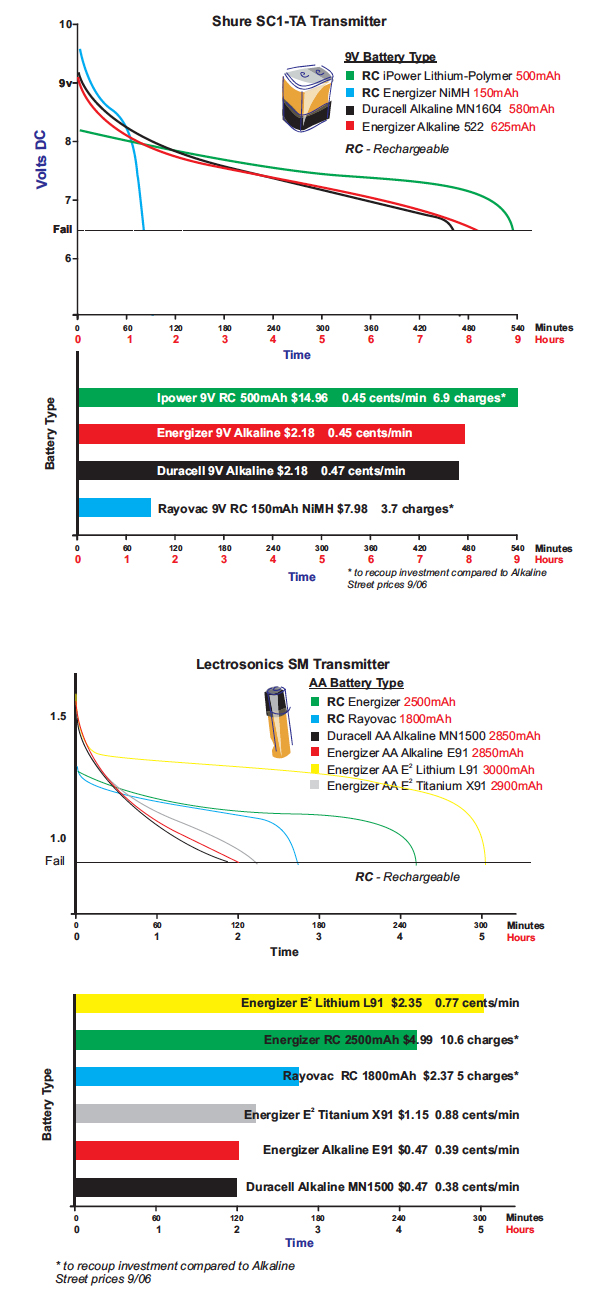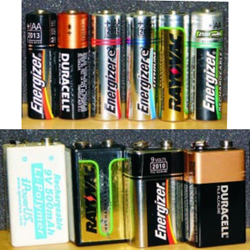9V Transmitter
For the 9V transmitter I used the Shure SC1-TA. It has a relatively low current drain (50mA) that remains relatively constant with increasing time until the battery voltage is insufficient (6.5V) to keep the unit on. This is a VHF system.
AA Transmitter
For the AA testing I used the Lectrosonics SM. It is an ultra-miniature digital hybrid UHF transmitter than runs from a single AA cell. The current draw is voltage-dependent. The transmitter turns off when the battery voltage drops to 0.9VDC.
The Test Setup
To test the batteries I drove the wireless transmitters with a balanced aux level signal from an iPod interfaced to each belt pack via a passive summing/balancing interface (Figure 1). Each was driven with program to produce a full-scale receive signal level on its receiver for the duration of the test.
The turn-off voltage and current draw for each transmitter was determined with a variable DC supply (with on-board ammeter) and an oscilloscope. The battery voltage was monitored with a programmable USB data logger, chosen for its very high impedance and minimal loading of the battery.

Voltage samples were gathered at 1-minute intervals and the test duration extended well beyond the transmitter turn-off time. The results were plotted using a graphing program.
Figure 2 shows the results of the tests. I included a plot of cost vs. time, as well as an estimate of how many charges would be required for the rechargeable batteries to become cheaper than the disposables (not counting the cost of the charger).
The 500mA Lithium Polymer 9V battery (www.ipower.com) is a relatively new development and was suggested by Gordon Moore of Lectrosonics (the 400mAh unit from the same vendor should be avoided for high current drain applications).

Specifications
The two major specifications given for batteries are the voltage (in volts DC) and the available current (in ampere hours).















